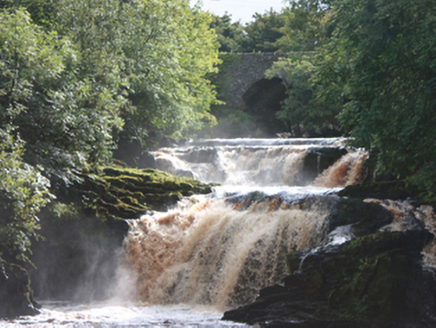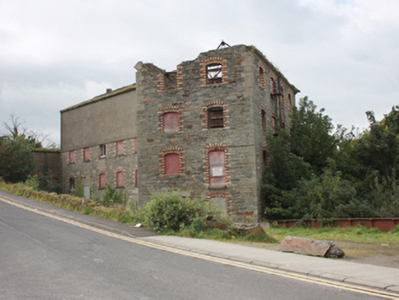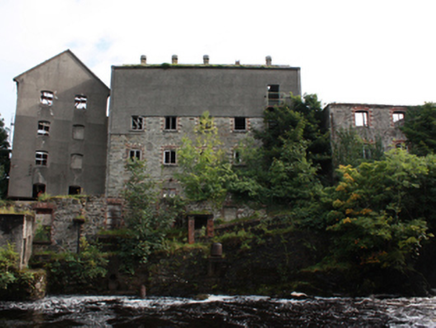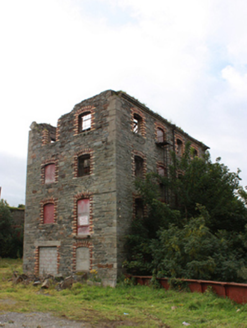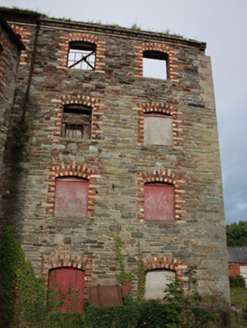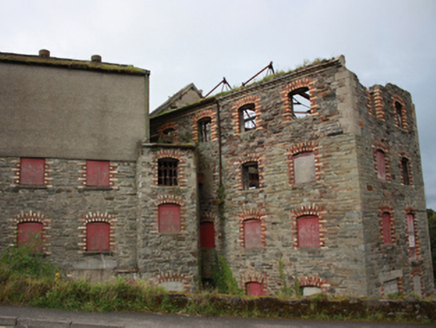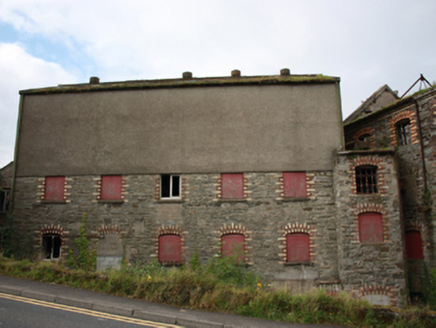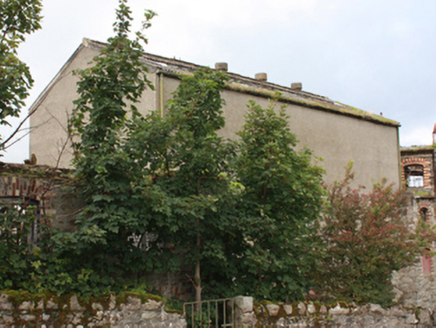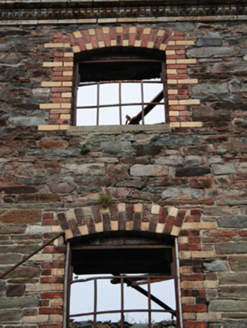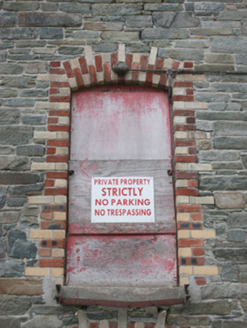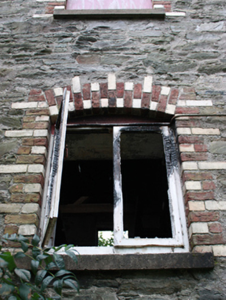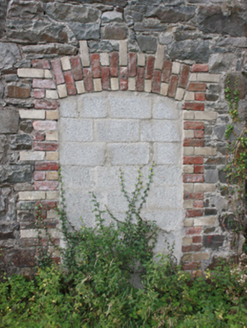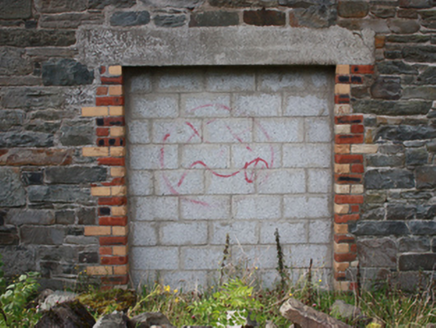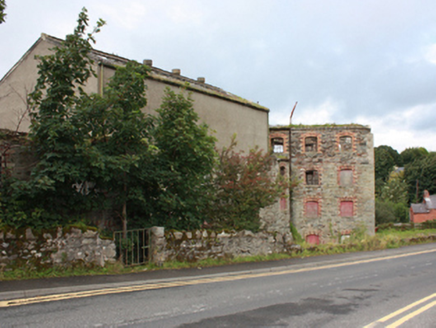Survey Data
Reg No
40815032
Categories of Special Interest
Architectural, Social, Technical
Original Use
Mill (water)
Historical Use
Hydroelectric power station
Date
1860 - 1900
Coordinates
235015, 431619
Date Recorded
11/09/2008
Date Updated
--/--/--
Description
Freestanding multiple-bay four and five-storey former corn mill complex in several blocks, built c. 1868 and extended c. 1890. Later also in use to generate electricity from 1905 or 1923 until 1954. Mill remained in production until 1980s, now derelict. Detached single-storey turbine house to rear of site. Pitched roofs, some now collapsed, originally of natural slate and later of corrugated-metal. Hipped natural slate roof (purple slate) to former office block having brick eaves courses including dogtooth course. Double pitched roof with steel truss structure to block to west with smooth rendered gable copings. Squared and coursed rubble stone walls with flush quoins to the corners; roughcast render to top floor of south-east block, smooth rendered walls to south gable of west block. Segmental headed window openings with polychromatic red and yellow brick surrounds with remains of multi-pane metal and timber casement window frames. Square-headed and segmental-arch door openings, some now infilled with blockwork, having polychromatic red and yellow brick surround and ashlar lintels. Set back from road overlooking Mill River to the south end of Buncrana. Weir to west. Steps giving access to river to rear of complex. Rubble stone boundary wall to road. Interior burnt out but some metal machinery remains insitu.
Appraisal
Although now out use and damaged by a recent fire, this imposing mid-to-late nineteenth-century former corn mill complex is of significant social and industrial heritage interest. Although now derelict with roofs collapsing, these buildings retain their original industrial character. It is robustly-built using local rubble stone, and its survival is testament to the quality of its original construction. It acts as an interesting historical reminder of the age of rural water-powered mills, and later turbine-powered mills. The juxtaposition between the grey limestone and the polychromatic brick dressings, typical of late nineteenth-century industrial architecture and engineering in Ireland, create a pleasing aesthetic appearance. Despite its derelict condition, it represents an important part of the town’s history, replacing an earlier mill on the this site depicted here on the Ordnance Survey first edition six-inch map of c. 1837. It is likely that there were a succession of mills at this location going back many hundreds of years as there is sufficient head of water to power mills at this location. This earlier mill, and possibly the later mill for a period (although this mill may have always been powered by a turbine), was powered by a headrace that ran from a mill pond with weir to the south-east of site. Griffith’s Valuation of c. 1857 lists the components of the mill as: miller’s house, office and land; house, office and land; flax and threshing mills. The occupier is listed as George H. Mitchell (who lived at St. Helen’s to the north from c. 1860 until 1900) and the owner a Sarah McClintock. The mill was later associated with the Swan family during the second half of the nineteenth century. Harry Percival Swan (1879 – 1970), a local antiquary, historian and writer, who presented a seaside park to the local community in 1965, worked here in the family milling firm when he left school in the 1890s. In 1905 or in 1923 (sources conflict), Swan’s Mill generated direct current electricity at the Mill River falls for the Buncrana Electricity Supply Company and provided the town, the first in Donegal, with a domestic supply until it was superseded by the ESB rural electrification scheme in 1954. Rebuilding works (unknown) of a ‘portion’ of the mill took place in 1932 to designs by the Derry architect and engineer John McFarlane Robinson (1870\1 – 1932\3). The Swan company was taken over by Rank (Ireland) Ltd. in the late 1950s, and milling continued here until the mid 1980s until it went out of use. Although this complex is now derelict and the machinery is now gone, this building represents an important element of the industrial and economic history of the Buncrana area, and it remains an integral component of the built heritage of the town. This mill complex is of social historical interest to the local community as a significant employer during the second half of the nineteenth century, and later due to it producing electricity for the town during the first half of the twentieth century. Sensitively converted to a new use, this building would make a strongly positive contribution to south-east end of the town. The weirs to site add to the setting and context, and are an important artefact of the industrial heritage of the local area in their own right.
